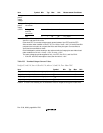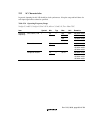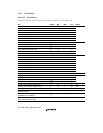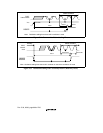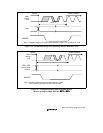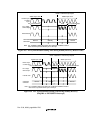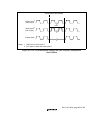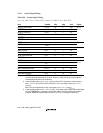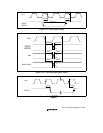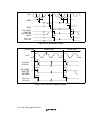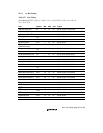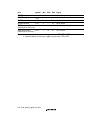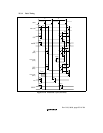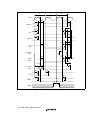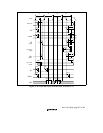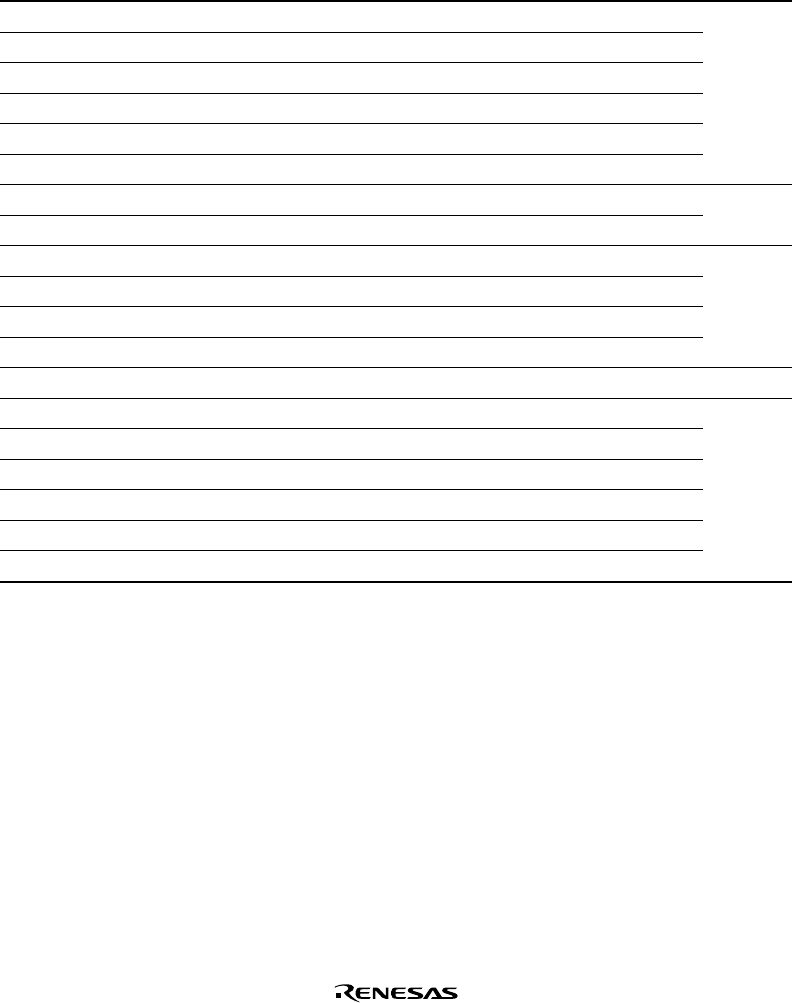
Rev. 5.00, 09/03, page 670 of 760
23.3.2 Control Signal Timing
Table 23.6 Control Signal Timing
Vcc = 3.3 ± 0.3 V, Vcc = 1.55 to 2.15 V, AVcc = 3.3 ± 0.3 V, Ta = –20 to 75°C
Item Symbol Min Max Unit Figure
RESETP pulse width t
RESPW
20
*
2
— tcyc 23.11,
RESETP setup time
*
1
t
RESPS
20 — ns 23.12
RESETP hold time t
RESPH
4—ns
RESETM pulse width t
RESMW
20
*
3
—tcyc
RESETM setup time t
RESMS
6—ns
RESETM hold time t
RESMH
34 — ns
BREQ setup time t
BREQS
6 — ns 23.14
BREQ hold time t
BREQH
4—ns
NMI setup time
*
1
t
NMIS
10 — ns 23.12
NMI hold time t
NMIH
4—ns
IRQ5–IRQ0 setup time
*
1
t
IRQS
10 — ns
IRQ5–IRQ0 hold time t
IRQH
4—ns
IRQOUT delay time t
IRQOD
— 10 ns 23.13
BACK delay time t
BACKD
— 10 ns 23.14,
STATUS1, STATUS0 delay time t
STD
— 10 ns 23.15
Bus tri-state delay time 1 t
BOFF1
015ns
Bus tri-state delay time 2 t
BOFF2
015ns
Bus buffer-on time 1 t
BON1
015ns
Bus buffer-on time 2 t
BON2
015ns
Notes: 1. RESETP, NMI, and IRQ5 to IRQ0 are asynchronous. Changes are detected at the
clock fall when the setup shown is used. When the setup cannot be used, detection
can be delayed until the next clock falls.
2. In the standby mode, t
RESPW
= t
OSC1
(100 µs) when XTAL oscillation is continued and
t
RESPW
= t
OSC2
(10 ms) when XTAL oscillation is off. In the sleep mode, t
RESPW
= t
PLL1
(100 µs).
When the clock multiplication ratio is changed, t
RESPW
= t
PLL1
(100 µs).
3. In the standby mode, t
RESMW
= t
OSC2
(10 ms). In the sleep mode, RESETM must be kept
low until STATUS (0-1) changes to reset (HH). When the clock multiplication ratio is
changed, RESETM must be kept low until STATUS (0-1) changes to reset (HH).



